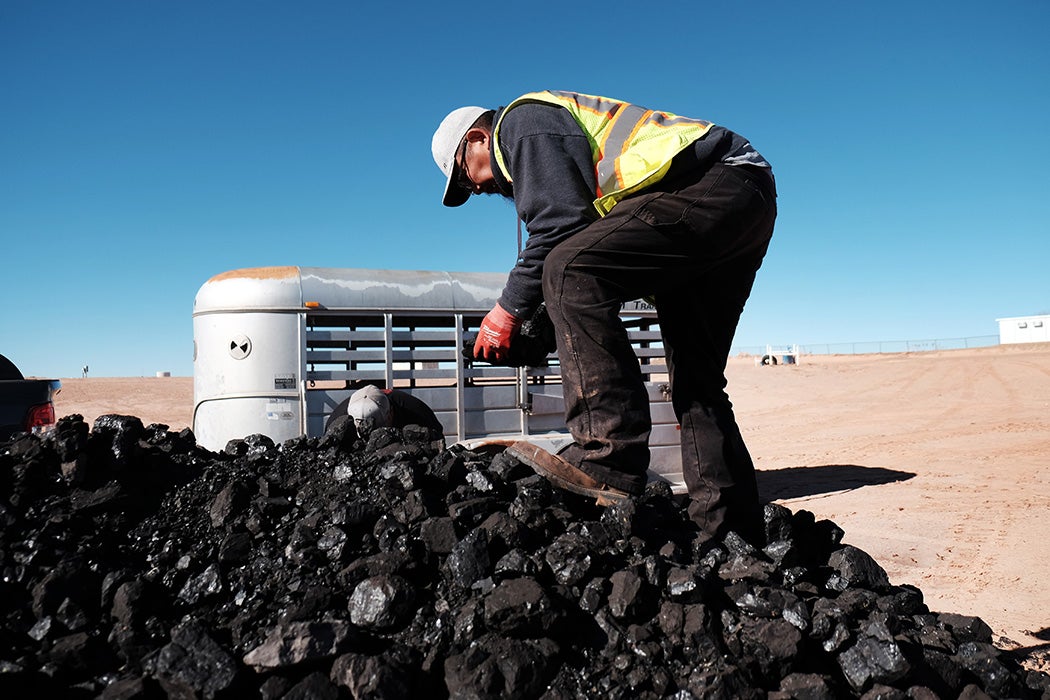As Diné scholar Andrew Curley wrote in his recent book, Carbon Sovereignty: Coal, Development, and Energy Transition in the Navajo Nation, “colonialism is a shape-shifter.” In this sustainability renaissance, green technologies—including renewable energy infrastructure in the form of photovoltaic solar fields, wind turbines, geothermal plants, and hydroelectric dams—have the potential to help the world transition to a carbon-free energy system and mitigate anthropogenic climate change. Yet, the environmental benefits, wealth, sovereignty, and agency that come from the development of renewable energy resources haven’t reached all communities equally. Infrastructure creation, like renewable energy, is shaped by uneven geographies, with development occurring in a way that promotes the ongoing project of settler colonialism, particularly in the United States.
In detailing the history of US colonialism and imperialism around natural resources, Diné (Navajo) and Dakota scholar B.K. Tom Goldtooth writes that as Indigenous reservations were formed in an era of treaty-making, the state found creative ways to maintain eminent domain over Tribal coal, gold, oil, and gas, and, now, lands for renewable energy. The Bureau of Indian Affairs has estimated that Tribal lands, which comprise approximately 5 percent of US land, could host 10 percent of all energy resources, renewable and non-renewable. But Tribal lands are particularly vulnerable to corporate renewable energy expansion due to the relative absence of land use regulation and lack of financial incentives (and access to upfront capital) for tribes to own and develop energy infrastructure. This means that Tribes typically lease land for infrastructure placement without actually reaping the benefits of ownership, electricity access, environmental accreditations (renewable energy credits or carbon credits), or tax credits—these are funneled to corporations and metropolitan areas that can shape industry operations. In fact, Diné scholar Melanie K. Yazzie found that as landowners, Tribal Nations actually lose bargaining power against transnational energy corporations over time. Moreover, the constraints of being unable to participate on the international stage erode Tribal sovereignty, leaving Tribes unable to shape energy policy and trade.
Despite this violence, as Yazzie underscores, Diné scholars, land defenders, and activists have challenged settler colonial erasure, dispossession, and extraction that underpin state-Tribal relations around renewable energy development. For the Diné, ancestrally from the lands of the US Southwest, such development could help the transition from a heavy reliance on coal. As Curley details, coal mining operations on Navajo lands over the past sixty years supported the recuperation of limited forms of sovereignty and capital for Tribal government operation. In transitioning to greener forms of energy, there may be ways to align new infrastructures with Indigenous futurity—to provide a clean, sovereign energy supply, offer access to dependable sources of electricity, generate revenue (which can support wider goals of land rematriation), and create opportunities for workforce development.
Weekly Newsletter
Indigenous scholars have produced volumes of work and proved with everyday practice viable alternatives to colonial-capitalist models of growth and development, in which the value of ancestral wisdom, spirituality, cosmology, reciprocity, care, and community are respected. As Yazzie writes, “the future demands nothing less of the conditions of vibrant futurity in which life in its entirety is able to thrive free from the violence of empire.” It cannot simply be about clean energy resourcing and climate mitigation; renewable energy development must also challenge the notion of capitalist growth, settler coloniality, and corporate-backed development in order to achieve sovereignty, agency, and liberation for Indigenous communities.
Support JSTOR Daily! Join our membership program on Patreon today.







